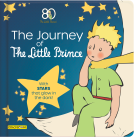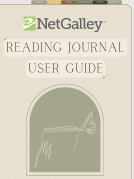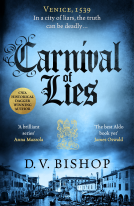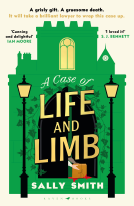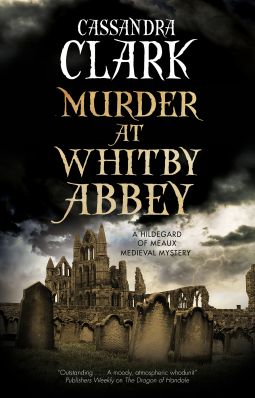
Murder at Whitby Abbey
by Cassandra Clark
This title was previously available on NetGalley and is now archived.
Send NetGalley books directly to your Kindle or Kindle app
1
To read on a Kindle or Kindle app, please add kindle@netgalley.com as an approved email address to receive files in your Amazon account. Click here for step-by-step instructions.
2
Also find your Kindle email address within your Amazon account, and enter it here.
Pub Date 1 Oct 2019 | Archive Date 30 Sep 2019
Talking about this book? Use #MurderAtWhitbyAbbey #NetGalley. More hashtag tips!
Description
Late December, 1389. Ordered to undertake a gruelling three-day journey to bleak Whitby Abbey in the far north of England in a bid to purchase the Abbey’s priceless Holy Relic – a lock of St Hild’s hair, said to be 700 years old – Hildegard of Meaux and her three companion monks arrive to find the Abbey a decidedly unwelcoming place, a place of strange customs and practices very different to their modest lifestyle at Meaux. Nor, as Hildegard discovers, is she the only visitor intent on acquiring the Relic.
Before the bidding war can begin, a body is discovered in the monastery’s apple store shed, and once again Hildegard is plunged into a baffling murder investigation where nothing is as it first appears. Something is rotten in the heart of Whitby Abbey – and it’s up to Hildegard to discover the truth.
Available Editions
| EDITION | Other Format |
| ISBN | 9780727889539 |
| PRICE | US$28.99 (USD) |
| PAGES | 240 |
Featured Reviews
 Meredith R, Reviewer
Meredith R, Reviewer
My thoughts
Though I had never read any of the previous books in this series, I thoroughly enjoyed this novel. Here’s a few reasons why:
1. A well-plotted mystery
Clark captured my attention with an intriguing prologue that raised multiple questions. Hildegard and the others have walked into a place where they are neither wanted nor welcomed. The dangers and intrigues at Whitby are real. Various characters have conflicting agendas, and some are willing to kill to get what they want. Someone might be a friend or foe–or both.
The mystery isn’t straight-forward. The whys and whos and whens are in question, of course, but so is the how: was the monk’s death an accident or murder? If he was deliberately killed, as Hildegard and her friends suspect, how did he die? No spoilers, but it’s one of the most unusual murder methods that I’ve read!
2. Fascinating historical background
Clark deftly weaves historical fact and fiction. The young king and his conflict with the Duke of Gloucester, the Duke’s condemnation of those who shelter heretics, Wycliffe’s disciples: characters speak reference them as easily as we might reference our current batch of politicians.
3. Well-developed characters
The characters feel true-to-life for their time period and circumstances. Clark steers clear of historical anachronism in their attitudes.
Hildegard, for example, has fallen into disgrace from a brief love affair. She does not respond with rebellion or question the need for penance. She is truly disappointed in herself for breaking her vow of celibacy, hurting her abbot, and sorrowful in heart.
Luke is a fascinating character. He’s innocent and endearing. Early in the novel, Hildegard notes that it doesn’t take much to shock him in the confessional. Yet as the novel progresses, his faith in the human nature is shaken. He hasn’t been out in the secular world like the widowed Hildegard or the former crusaders Gregory and Egbert. He’s shocked by the excesses and extravagances in the Whitby Abbey monastics, and through his shock, we realize how appalling their behavior is and how far it is from what it ought to be.
He’s also shaken by his sudden sexual desire for a beautiful woman and realizes for the first time what his commitment to celibacy means. I’ve read a few other medieval monastic novels where this is an issue: the person takes a vow of lifelong celibacy either before he or she realizes what it means or when he or she is temperamentally unsuited for it. It’s sad. But he rises to the occasion beautifully.
I also enjoyed young Torold, a boy who is savvy beyond his years.
4. Compassionate characters
One final thing. I appreciated how Hildegard, Luke, and their friends act toward Sabine, a woman of dubious virtue, and Anna, a new widow with young children who has been kicked out of her house. Their compassion isn’t only words; they live it through their actions. Their intercession and help make a difference in these women’s lives. Here, the monastics take the Scriptural injunction to care for orphans and widows as seriously as they take their vows of celibacy and poverty. It is a beautiful thing to see.
Overall, this is a well-written, engaging novel. If you enjoy historical novels or mysteries set in medieval times, you’ll enjoy Murder at Whitby Abbey.
Thanks to Severn House and Netgalley for a copy of Murder at Whitby Abbey in exchange for an honest review.
(Note: This review will be posted to my blog on September 30, 2019.)
Readers who liked this book also liked:
Rick Riordan; Mark Oshiro
Children's Fiction, LGBTQIA, Teens & YA
Keith Martin; Konstantinos Mersinas; Guido Schmitz; Jassim Happa
Business, Leadership, Finance, Computers & Technology, Reference
